HTC 10 vs iPhone 6s Plus, Galaxy S7, LG G5: low light camera comparison
You can now read:
- iPhone 7 vs iPhone 6s Galaxy S7 Edge vs LG G5 Camera Comparison
- Sony Xperia XZ vs Samsung Galaxy S7 Edge vs Apple iPhone 6s Plus vs LG G5 Camera comparison
- Google Pixel XL vs iPhone 7 Plus vs Galaxy S7 Edge vs LG G5 Camera comparison
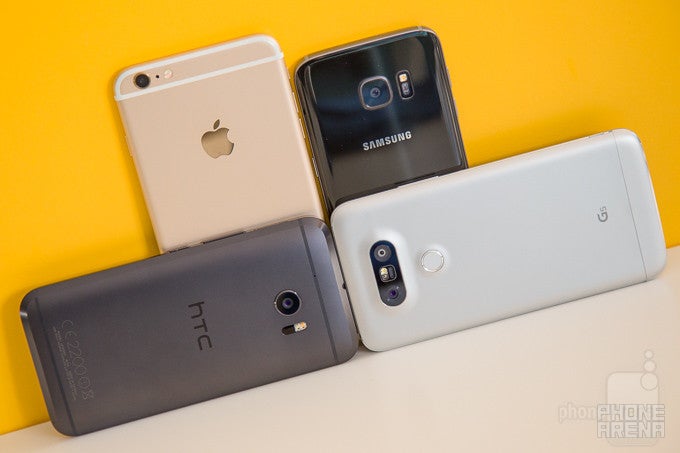
The HTC 10, however, is unlike its predecessors. As you might have read in our HTC 10 review, its camera delivers terrific results, both during daytime and when light conditions are tricky. This should make today's camera comparison quite interesting, to say the least. HTC now has the opportunity to drop its underdog status and establish itself as a formidable force in the camera department. But first, it will have to endure a race against three very capable opponents, namely the iPhone 6s Plus, the Samsung Galaxy S7, and the LG G5.
Before we comment on any of the images we took last evening, let us take a look at what these four phones have to offer in terms of specs.
| Camera Specs | ||||
| HTC 10 | iPhone 6s Plus | Samsung Galaxy S7 | LG G5 | |
| Resolution and aspect ratio | 12MP @ 4:3 4000 x 3000 pixels | 12MP @ 4:3 4032 x 3024 pixels | 12MP @ 4:3 4032 x 3024 pixels | 16MP @ 16:9 5312 x 2988 pixels |
| Sensor and pixel size | 1/2.3" 1.55 μm | 1/3" 1.22 μm | 1/2.5" 1.4 μm | 1/2.6" 1.12 μm |
| Focal length and aperture | 26 mm F1.8 | 29 mm F2.2 | 26mm F1.7 | 28 mm F1.8 |
| Focus and stabilization | Laser AF Optical stabilization | Phase detection AF Optical stabilization | Dual Pixel AF Optical stabilization | Laser AF Optical stabilization |
Technically, the HTC 10 does not have the most megapixels at its disposal, but this isn't something you should care about anyway. What matters more is that it has the biggest sensor with the biggest pixels. In theory, this should translate to less digital noise and better light sensitivity. The Galaxy S7 stands out with the widest aperture among these four phones, and that is another factor affecting how much light a camera can pick up. Furthermore, we see that all four cameras take advantage of optical image stabilization, allowing them to shoot using longer exposure times, thus absorbing more light. All in all, the HTC does not bring a knife to a gun fight, but its opponents can surely stand their grounds. Let us now see how these four perform in real life.
Note: the high-resolution images in the galleries below are smaller than the originals. We've scaled these down to make them load faster. If you insist on seeing the full-resolution photos and don't mind some of them being over 10MB in size, they're in a separate gallery found at the very end of the article.
Scene 1: The museum
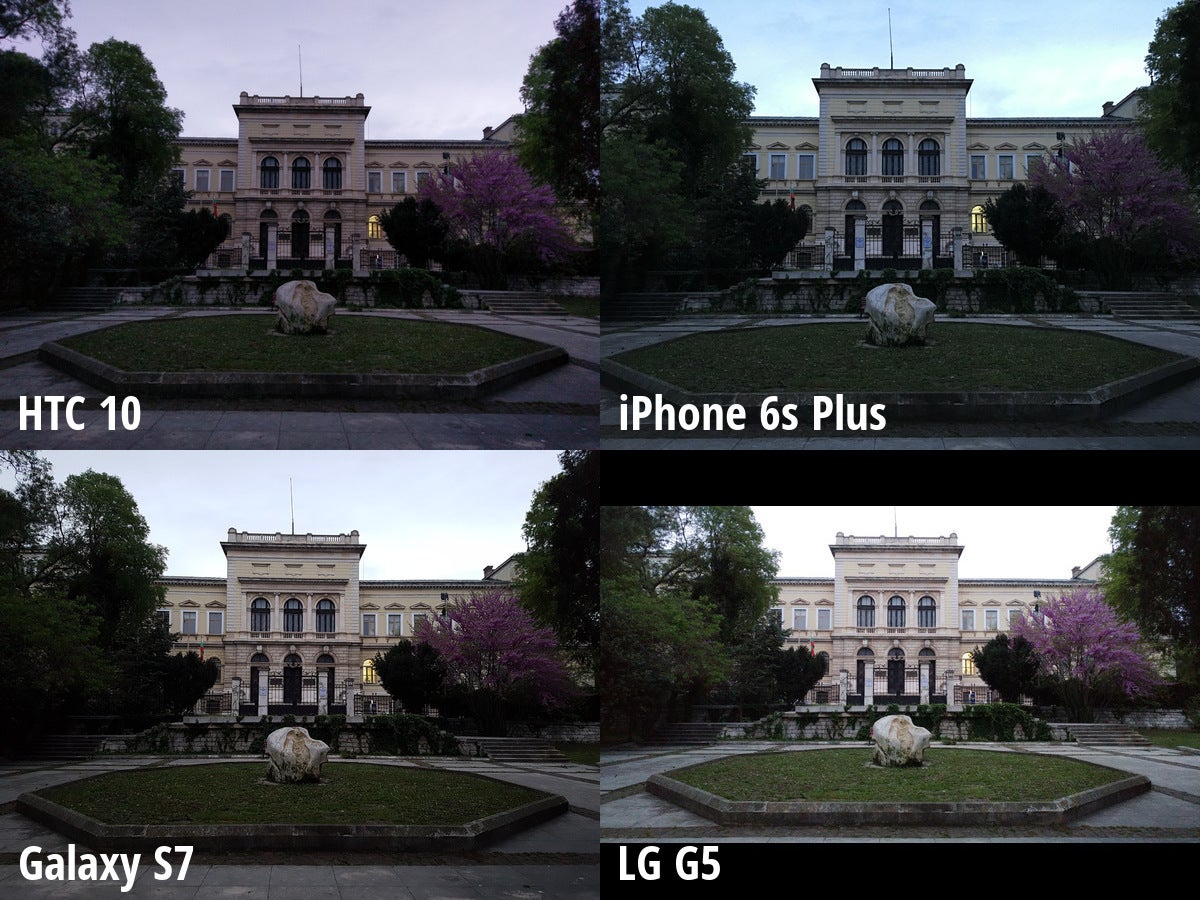
By the time we arrived downtown, the sun had already set. Street lamps were about to go off as the little remaining sunlight scattered across the sky was weakening by the minute. The moment seemed right to start shooting.
Disappointingly, the HTC 10 couldn't quite handle this first scene well. Its photo lacks exposure, which gives it a gloomy, unnatural look. Besides, the colors are far from accurate, as evident by the purplish hue dominating the sky. The iPhone 6s Plus yielded a photo with better colors, but it could still use some more exposure. The Galaxy S7 got the colors right and exposed the scene enough to accentuate on the museum's façade, but left the shadows overly dark. It looks like the best image overall was produced by the LG G5, which may have overexposed the sky, but has made everything else in the photo appear close to the way it did in real life.
| Scene 1: EXIF data | ||||
| HTC 10 | iPhone 6s Plus | Galaxy S7 | LG G5 | |
| ISO | ISO250 | ISO100 | ISO200 | ISO400 |
| Shutter speed | 1/25 | 1/8 | 1/19 | 1/12 |

Scene 2: Silhouettes
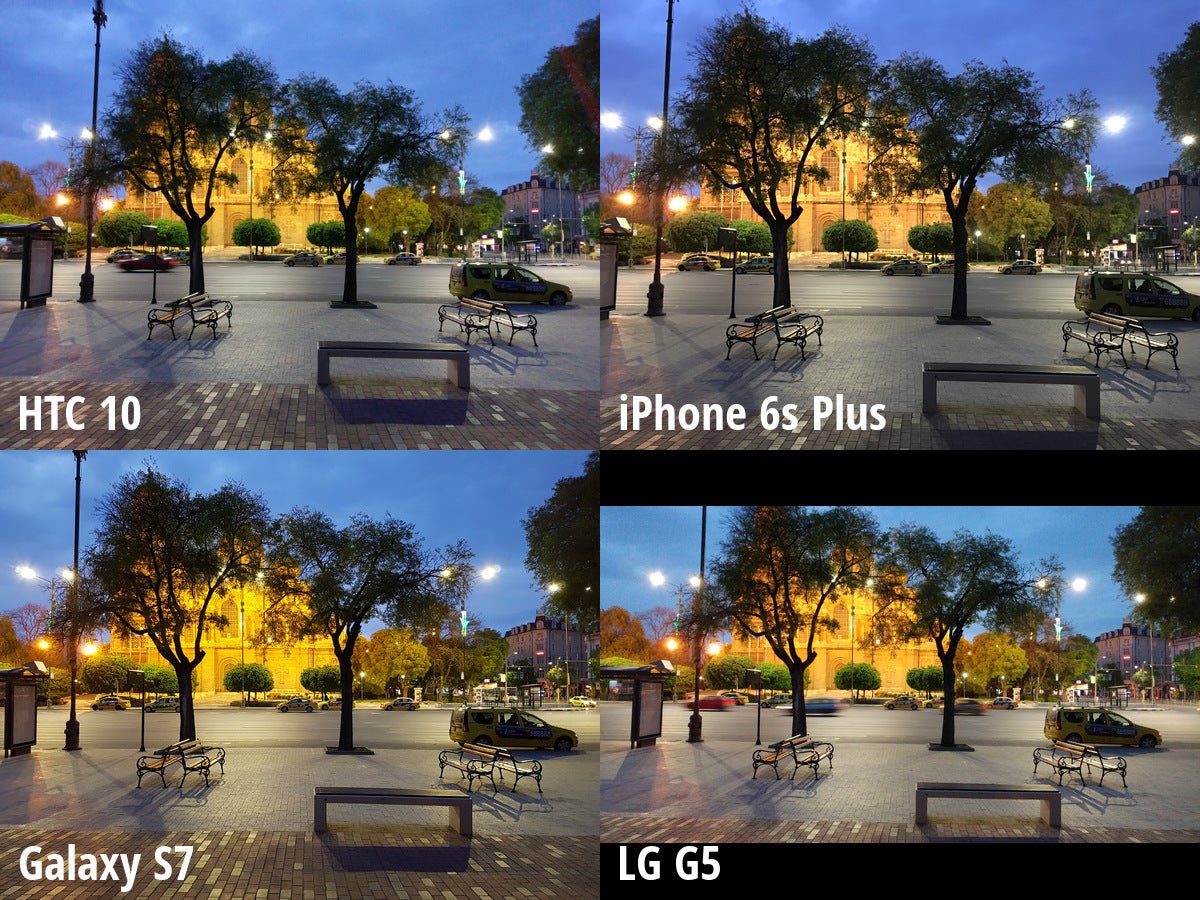
It was getting dark quickly, and the streets were starting to look bare. Lights of all kinds were already blending with the twilight when we snapped this set of shots.
This particular scene was no challenge to the HTC 10, obviously, as it managed to capture a splendid image. Just look at the detail! Sure, the image is a bit grainy from up close due to the higher ISO setting, but we'd take some digital noise over smudged details any day. The iPhone's photo is also looking great. Detail in it isn't quite as sharp, but the image has an overall pleasing, natural look. It is only the Galaxy S7 that managed to mess up the colors by adding too much saturation and not hitting the right white balance. At least details look okay despite the rather aggressive sharpening. As for the LG G5, it is treating us to a very faithful reproduction of the scene – one rich detail and accurate in colors.
| Scene 2: EXIF data | ||||
| HTC 10 | iPhone 6s Plus | Galaxy S7 | LG G5 | |
| ISO | ISO640 | ISO100 | ISO200 | ISO400 |
| Shutter speed | 1/14 | 1/4 | 1/10 | 1/11 |
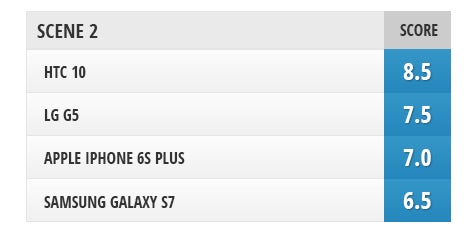
Scene 3: At the bar
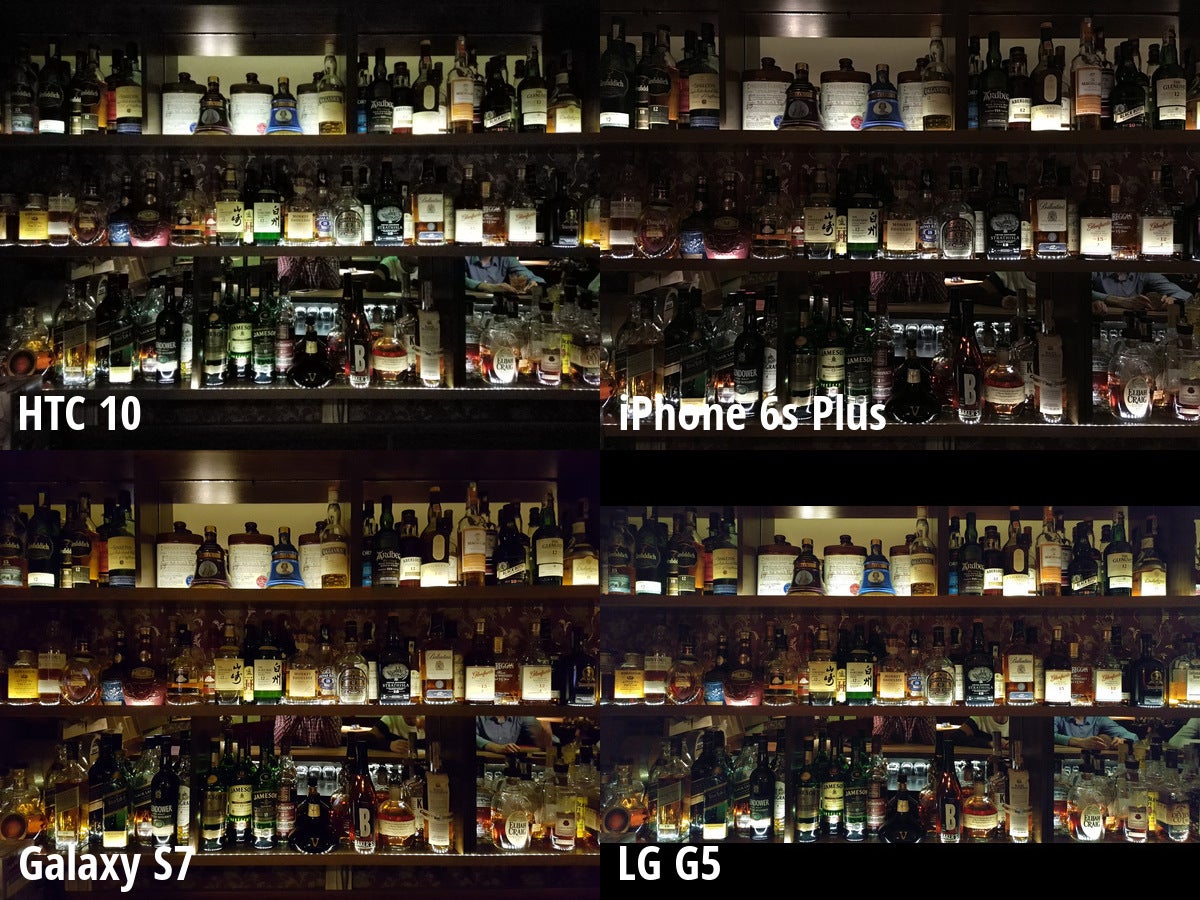
It was a long day at the office, so we stopped at a favorite place of ours to chill out, and while doing that, we shot this set of images. Analyzing the HTC 10's photo confirms a pattern that we noticed – its camera is not afraid to shoot at high sensitivity levels. This explains the graininess seen in its image. But the good news is that the noise is tolerable – text on the labels, for instance, is still legible – and the high ISO value allows the HTC 10 to keep its shutter speed high, thus reducing the chance of motion blur spoiling the image. And overall, its image looks presentable. It is not the best in this set, but it looks decent nonetheless.
The iPhone 6s Plus took a slightly darker, duller image, but we'd still rank it above average in quality. There's a good amount of detail preserved in it, if you take a closer look. But the photo from the Galaxy S7 definitely draws more attention. The phone drew in more light to produce a brighter, more vivid image. Same is the case with the LG G5, which captured fine details even better than the S7.
| Scene 3: EXIF data | ||||
| HTC 10 | iPhone 6s Plus | Galaxy S7 | LG G5 | |
| ISO | ISO3200 | ISO250 | ISO1000 | N/A |
| Shutter speed | 1/10 | 1/4 | 1/10 | 1/9 |
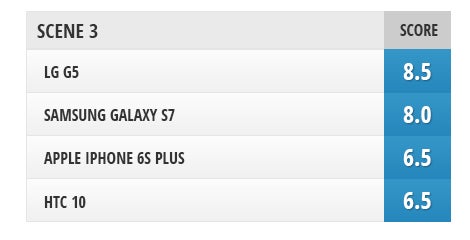
Scene 4: Group shot
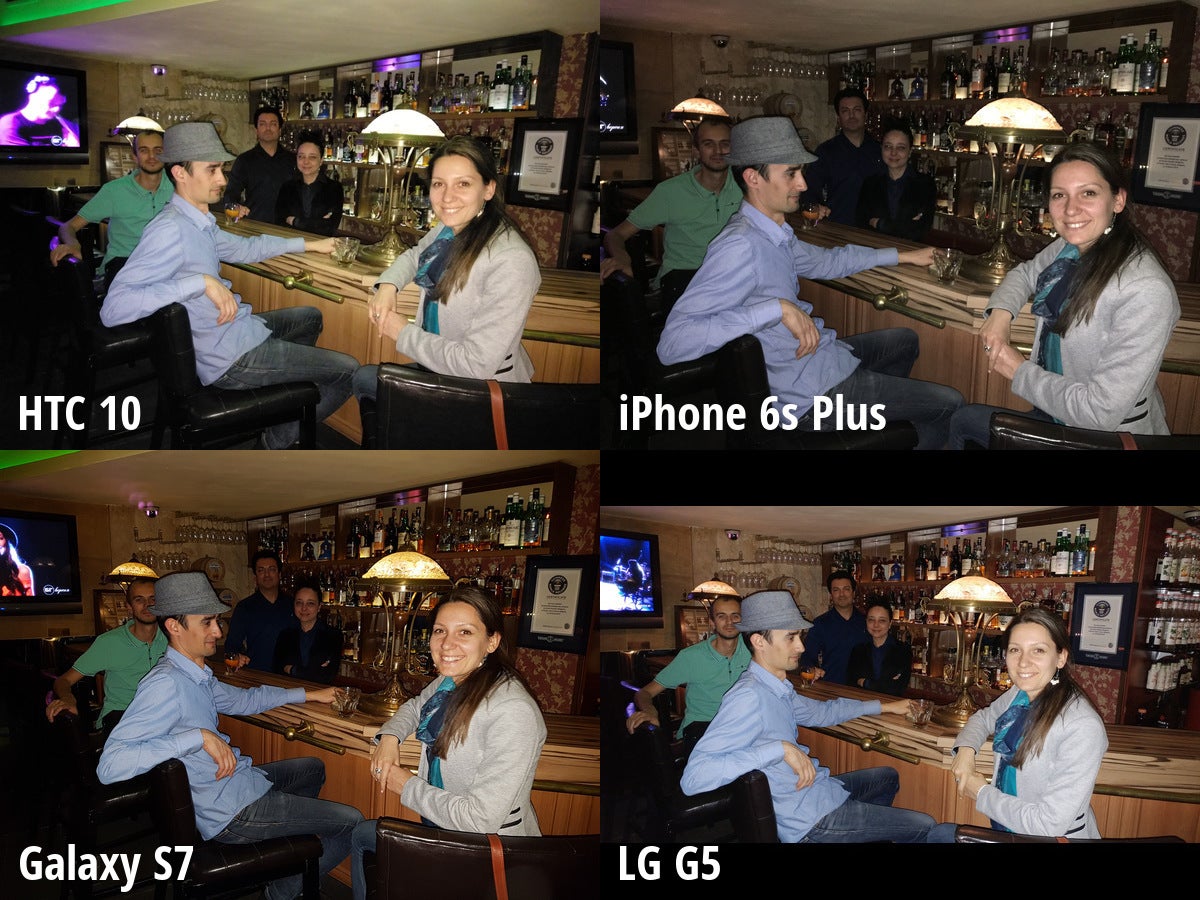
As we were about to leave, our lovely bartenders agreed to join us for a group shot. Little did they know that they were going to appear in an article of ours. But that's not important right now. What matters is that all four phones come with powerful LED lights and they know when to use them.
It is good to see that the HTC 10 managed to take a balanced, well-illuminated photo with pleasing colors. On the downside, the high ISO setting is probably why some of the detail isn't there. The image from the iPhone is slightly darker in appearance, especially in the background, but is still good-looking given the conditions. We like the warm tone in the photo from the Galaxy S7, but we're not into its excessive contrast. And then there's the LG G5, which is once again leading the pack with a bright, detailed image.
| Scene 4: EXIF data | ||||
| HTC 10 | iPhone 6s Plus | Galaxy S7 | LG G5 | |
| ISO | ISO1600 | ISO250 | ISO200 | ISO350 |
| Shutter speed | 1/15 | 1/17 | 1/15 | 1/9 |
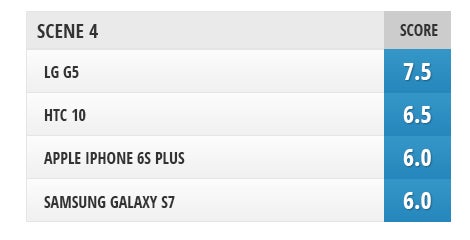
Scene 5: The church
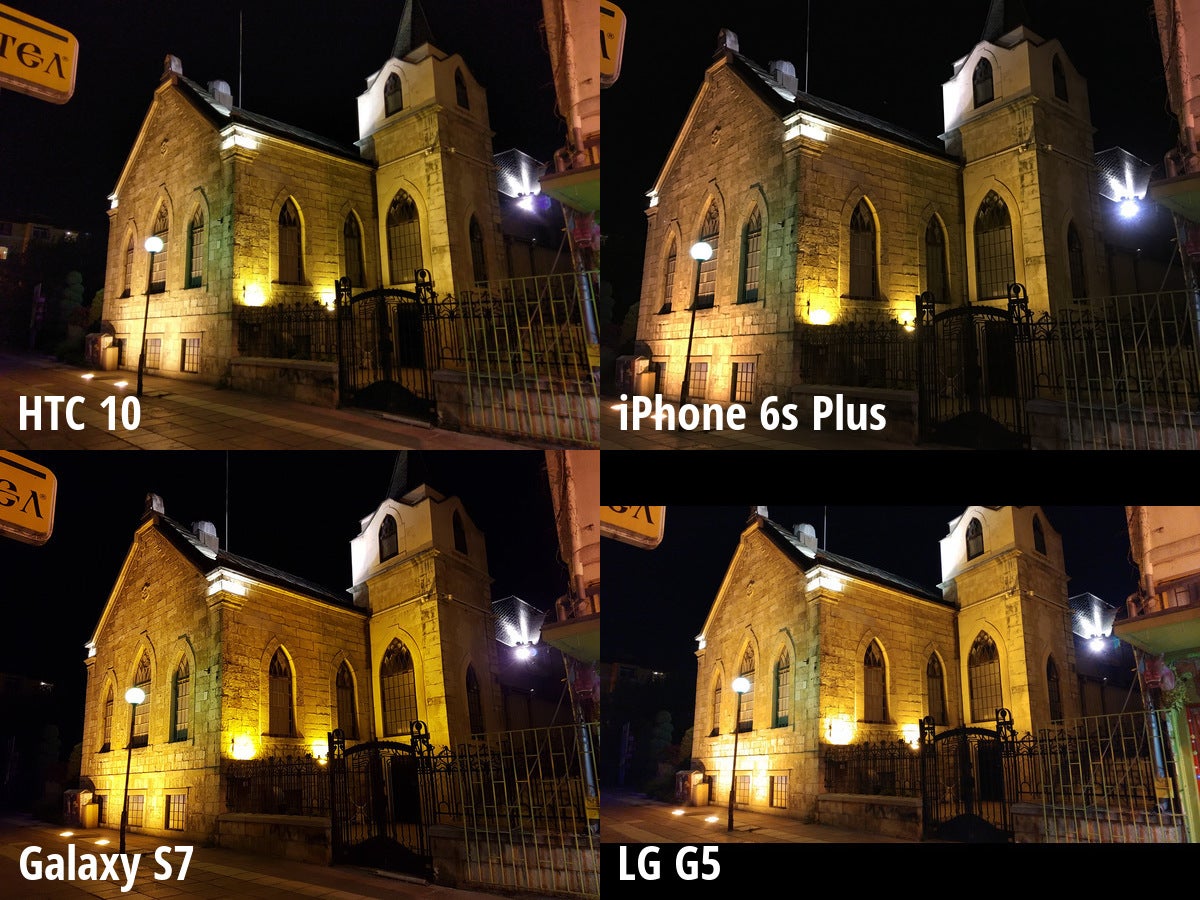
It was getting late, but we still had work to do, so we continued taking photos as we were slowly walking home. This particular scene we're very pleased with because all four smartphones captured it beautifully. Detail in all images is plentiful, colors are accurate, and the exposure is set well. Only the Galaxy S7 shows its tendency to boost colors and saturation, but we'll let it slip this time because it hasn't quite overdone it. We're also going to give the HTC 10 and the LG G5 a slightly higher score for capturing more detail in the shadows.
| Scene 5: EXIF data | ||||
| HTC 10 | iPhone 6s Plus | Galaxy S7 | LG G5 | |
| ISO | ISO500 | ISO160 | ISO200 | ISO350 |
| Shutter speed | 1/17 | 1/8 | 1/13 | 1/10 |
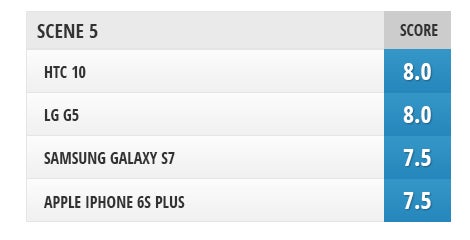
Scene 6: At the garden
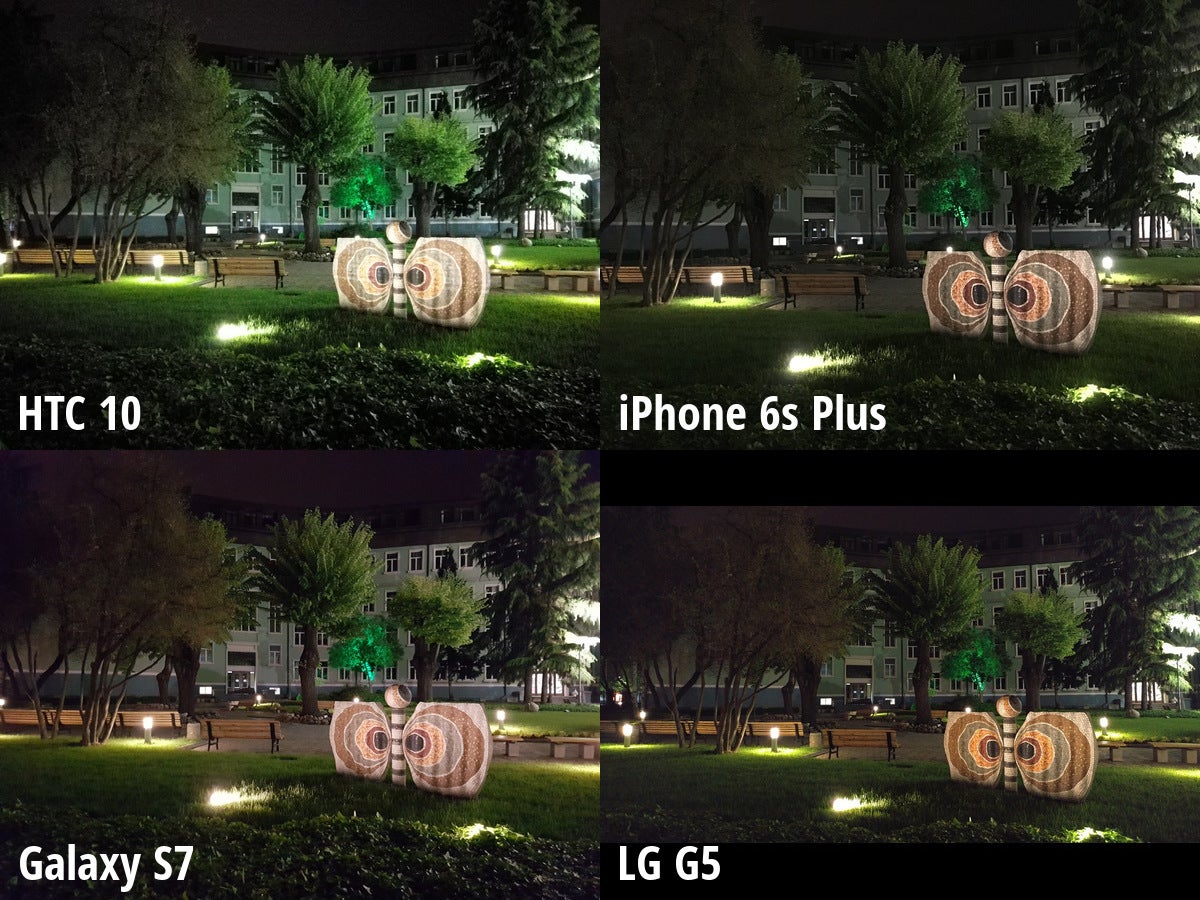
As we said before, the HTC 10 has a tendency to set its sensitivity high, and the result is an increase in digital noise. This is most evident in the scene here, where the ISO value it set has obliterated fine details. Yes, the image looks decent as a whole, but the loss in detail is easily noticeable. The iPhone 6s Plus and Galaxy S7 both got closer to reality with their photos. We see a good amount of details and overall adequate exposure. But we can't deny that the LG G5 deserves the top spot in this round. Its image is full of fine detail – the kind other phones would have failed to capture – and the colors come very close to the way they looked when we shot the image. We're impressed!
| Scene 6: EXIF data | ||||
| HTC 10 | iPhone 6s Plus | Galaxy S7 | LG G5 | |
| ISO | ISO3200 | ISO400 | ISO1600 | N/A |
| Shutter speed | 1/6 | 1/4 | 1/10 | 1/9 |
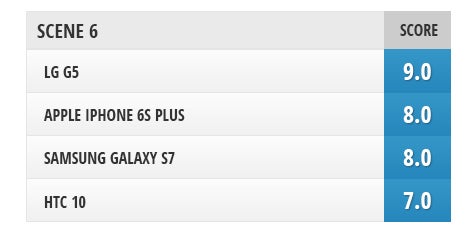
Scene 7: The university
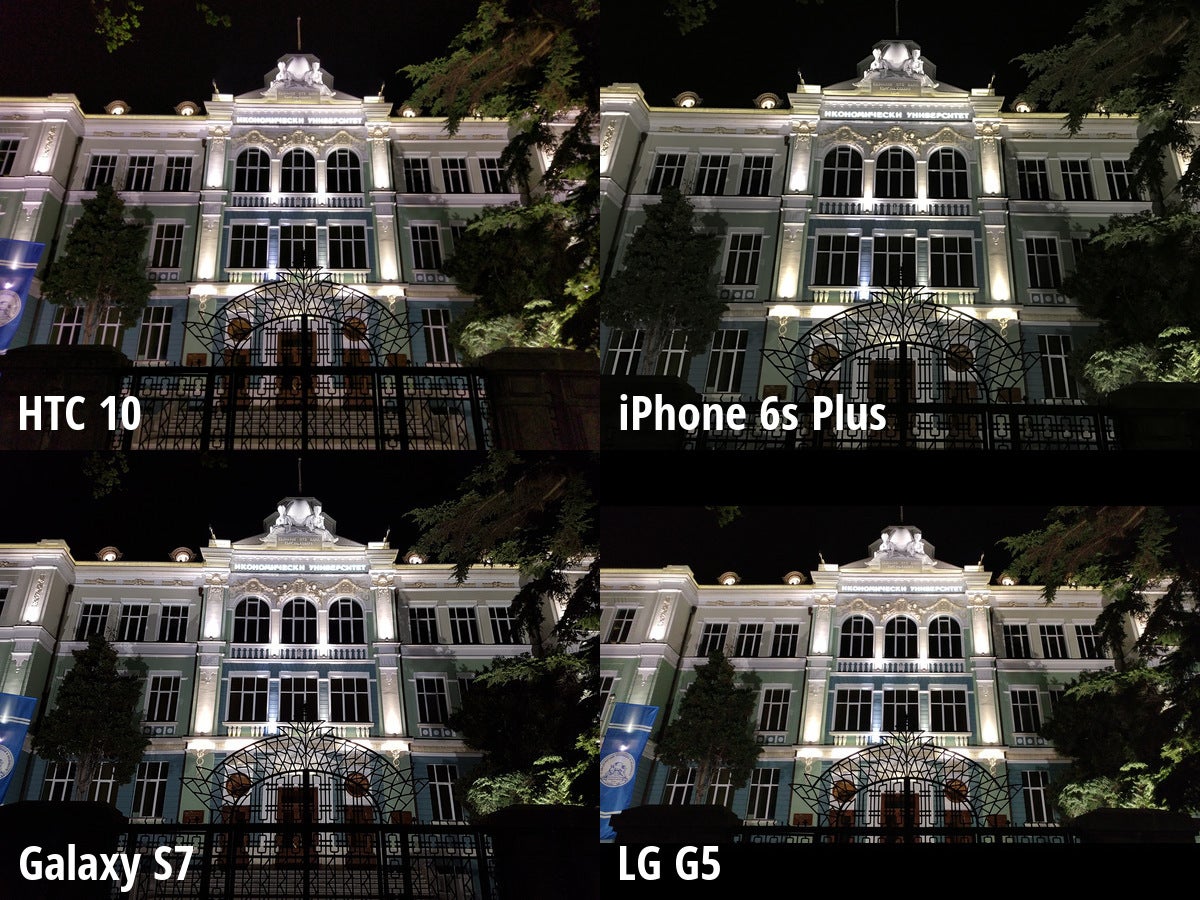
| Scene 7: EXIF data | ||||
| HTC 10 | iPhone 6s Plus | Galaxy S7 | LG G5 | |
| ISO | ISO400 | ISO100 | ISO200 | ISO400 |
| Shutter speed | 1/20 | 1/8 | 1/18 | 1/20 |
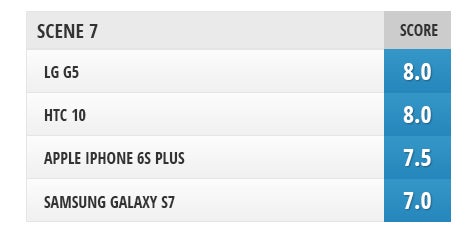
Scene 8: Under the tree
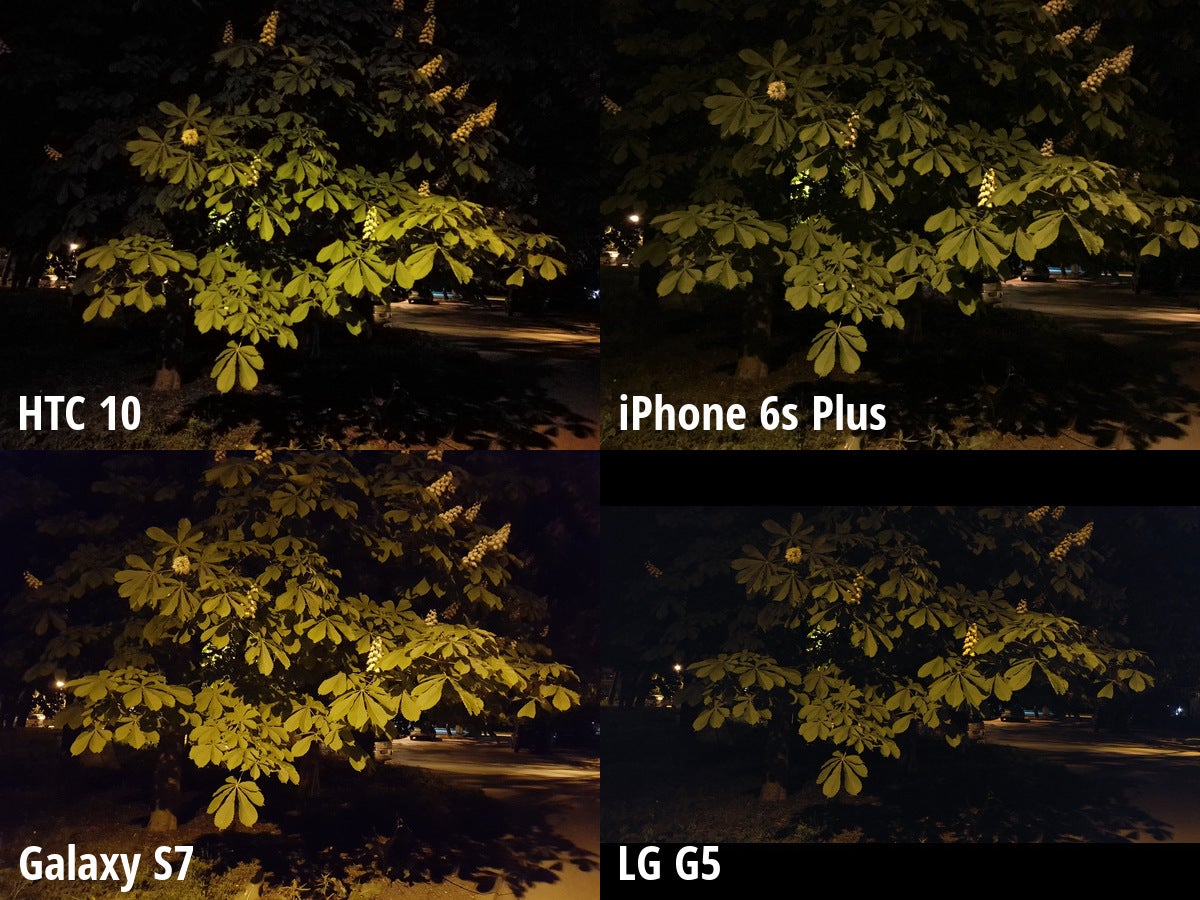
For this last set of photos, the only significant light source nearby was a street light behind us. This, apparently, wasn't enough for any of the four phones to take a compelling photo. All of the images are rather soft in detail, which is to be expected looking at the high ISO values they've used. Overall, the Galaxy S7's image is the one we find best. It looks like its camera has captured the most light, and the photo has a good amount of detail in it. The other three photos look decent overall, but nothing more.
| Scene 8: EXIF data | ||||
| HTC 10 | iPhone 6s Plus | Galaxy S7 | LG G5 | |
| ISO | ISO3200 | ISO1250 | ISO1250 | N/A |
| Shutter speed | 1/6 | 1/4 | 1/6 | 1/9 |
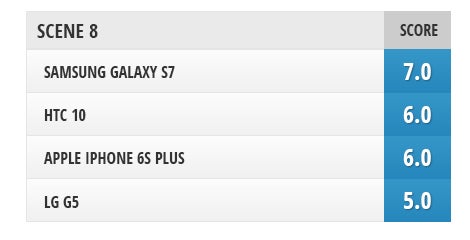
Conclusion
Now is the time to sum the scores and to announce the winning smartphone, but before we get to that, we want to congratulate HTC on stepping up its game. At long last, we have an HTC flagship with a camera that's in the same league with its high-end rivals. True, the HTC 10 did not win today's comparison, but it gave its opponents a good run for their money. Great job, HTC!
We're no less excited to say that the LG G5 dominated this camera comparison. Scene after scene, it kept on delivering clear, detailed shots without us having to do anything more than pressing the shutter. No less importantly, it is impressive to see it producing constant results – almost every night shot that we took with it turned out really, really good.
The Galaxy S7 holds great potential with its camera, and we can't deny that we're pleased with the images it takes. Room for improvement is present, however, as the camera software has the tendency to exaggerate certain aspects of the photo, such as contrast and color saturation. Still, when it comes to low-light photography, the camera on the S7 is one of the best performers you'll come across.
As for the iPhone 6s Plus, it may have finished in last place, but the score gap between it and its rivals is slim. It is almost negligible, we'd say. As usual, the iPhone excels in speed and ease of use, which makes it an excellent choice for photographers of any level of expertise.
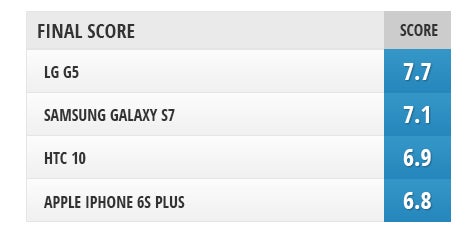
Note: Below are the full-resolution photos we took for this comparison. The high-res samples in the previous galleries were smaller in size to load faster.
You can now read:
- iPhone 7 vs iPhone 6s Galaxy S7 Edge vs LG G5 Camera Comparison
- Sony Xperia XZ vs Samsung Galaxy S7 Edge vs Apple iPhone 6s Plus vs LG G5 Camera comparison
- Google Pixel XL vs iPhone 7 Plus vs Galaxy S7 Edge vs LG G5 Camera comparison
Follow us on Google News


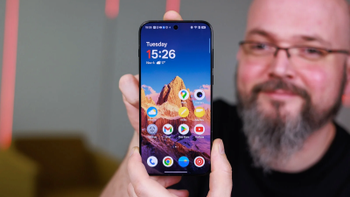
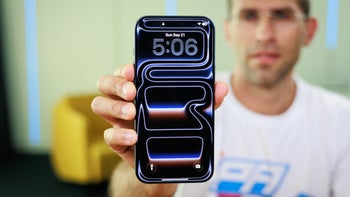
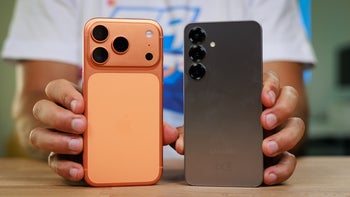
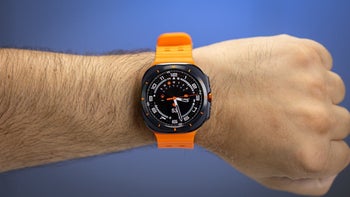
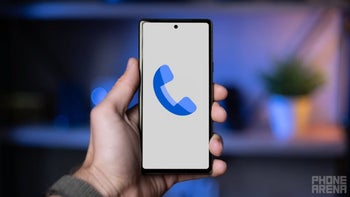

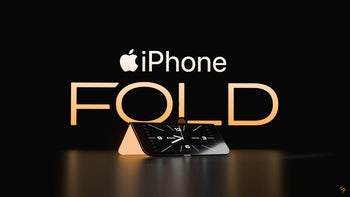
![A new Android bug is making it impossible to install new apps. Are you affected? [UPDATE]](https://m-cdn.phonearena.com/images/article/176703-wide-two_350/A-new-Android-bug-is-making-it-impossible-to-install-new-apps.-Are-you-affected-UPDATE.webp)
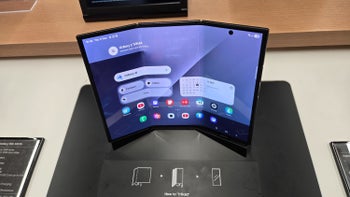
Things that are NOT allowed:
To help keep our community safe and free from spam, we apply temporary limits to newly created accounts: